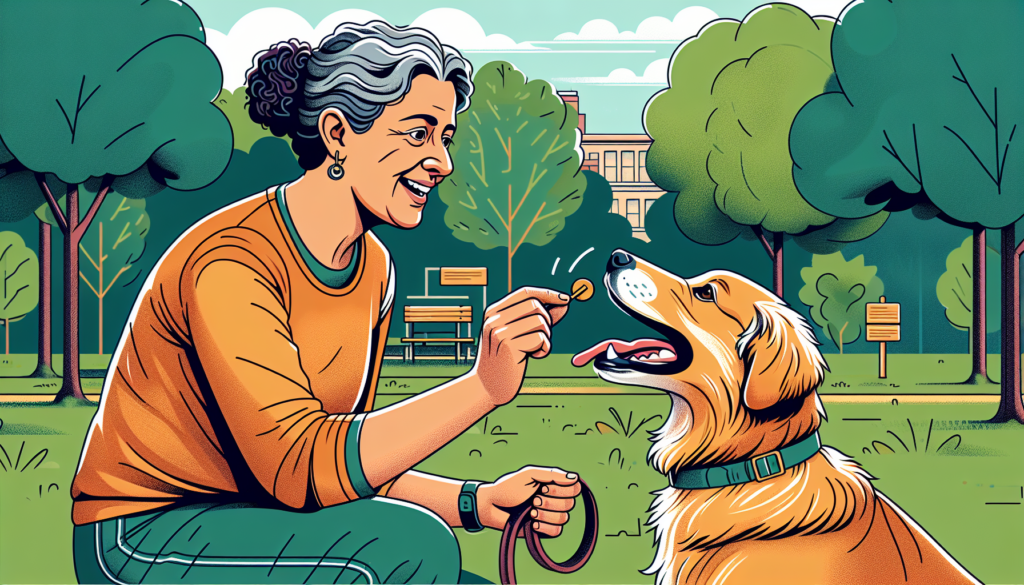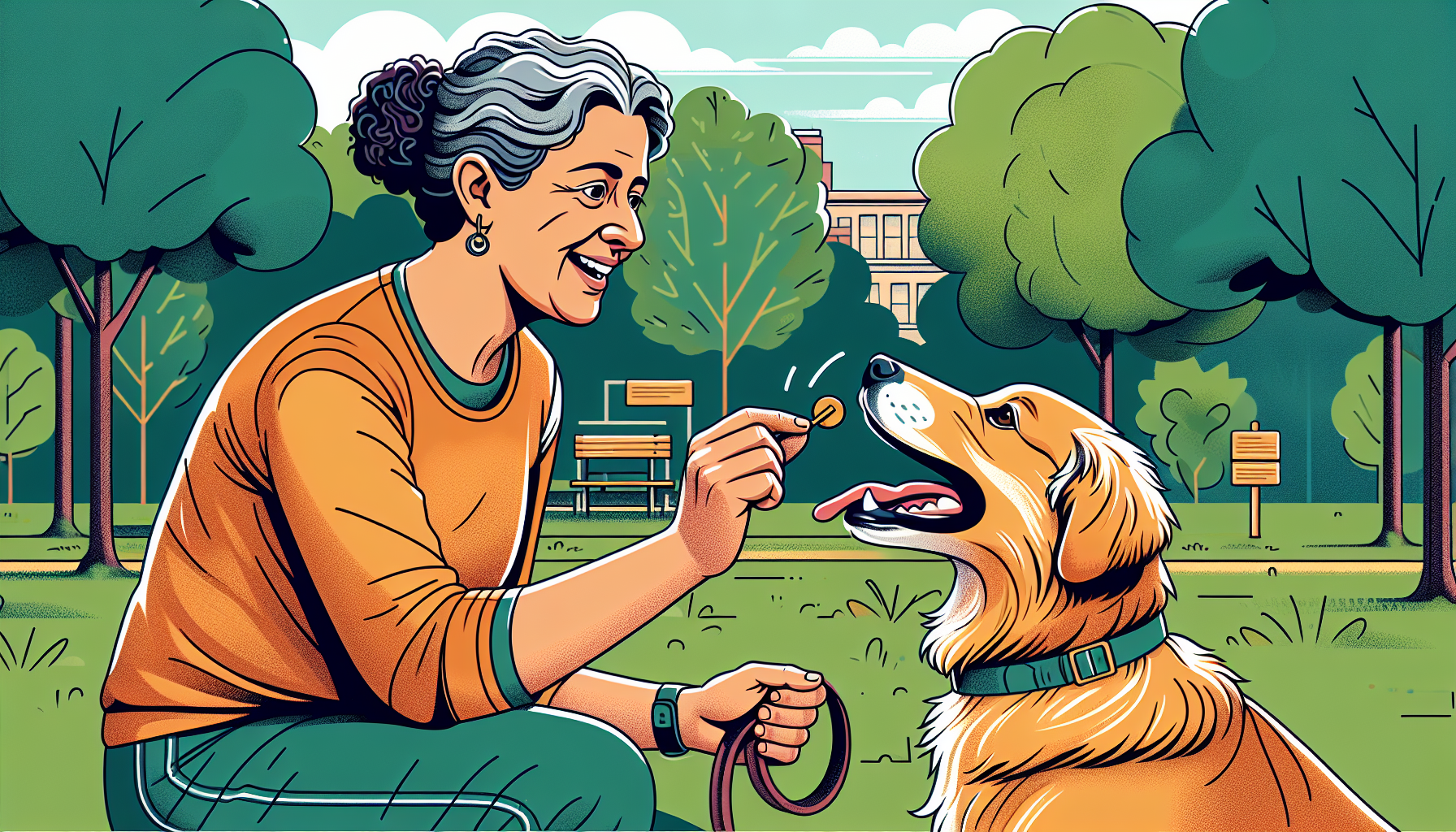If you’re a proud dog owner who wants to establish a strong bond and ensure well-behaved furry companionship, then building an effective dog training routine is crucial. This article will guide you through the essential steps and strategies to create a routine that is not only effective but also enjoyable for both you and your four-legged friend. From setting clear goals to incorporating positive reinforcement techniques, you’ll discover practical tips and insights to transform your dog’s behavior and enhance your relationship with them. So, get ready to embark on a rewarding journey towards a well-mannered and obedient pup!
Set Clear Goals
To build an effective dog training routine, it’s crucial to start by setting clear goals. This involves defining the desired behaviors you want your dog to learn and exhibit. Whether it’s teaching your dog to sit, stay, come, or lie down, outlining these behaviors will provide focus and direction to your training efforts. Additionally, identifying any specific problem areas or behaviors that need improvement will allow you to tailor your training routine accordingly. Lastly, establishing realistic timelines for achieving these goals is important to stay motivated and track progress.
Create a Consistent Schedule
Consistency is key when it comes to training your dog. By establishing a consistent schedule, you create structure and routine for both you and your furry friend. Determine how frequently you will train your dog, taking into consideration factors such as their age, breed, and individual needs. Allocate a specific amount of time for each training session, ensuring it is manageable for both you and your dog. Stick to a daily routine to reinforce the training schedule, as dogs thrive on predictability and repetition. Consistency and a regular training schedule will promote effective learning and development.
Choose the Right Training Methods
The success of your dog’s training routine will largely depend on the methods you choose to employ. Positive reinforcement is a highly effective training technique that involves rewarding desired behaviors. This can be done through treats, verbal praise, or petting. Clicker training, where a distinct sound is used to signal correct behavior, can also be incorporated. Marker training is another technique that involves using specific words or sounds to mark the desired behavior. Modeling, whereby the trainer demonstrates the desired behavior for the dog to emulate, can also be helpful. Most importantly, consistency and repetition should be maintained throughout all training methods to reinforce learning.

Start with Basic Commands
When beginning a dog training routine, it’s important to start with basic commands. These commands form the foundation for more advanced training and help establish good behavior patterns. Sit, stay, come, and lie down are essential commands that every dog should learn. Teaching your dog these basic commands will not only ensure their safety but also make daily activities such as walks and visits to the vet more manageable. Starting with basic commands allows you to build a solid training foundation before progressing to more complex behaviors.
Use Reward-Based Training
Reward-based training is a positive and effective method to motivate and reinforce desired behaviors in your dog. Select suitable rewards that your dog finds enticing. This may include treats, praise, or playtime. The timing of the reward is crucial – it should be given immediately after your dog performs the desired behavior. By associating the reward with the behavior, your dog will develop a positive association and be more motivated to repeat the behavior in the future. Consistency in rewarding your dog for correct behaviors is important to solidify the training process.
Avoid Punishments and Harsh Techniques
Using punishments and harsh techniques in dog training can have negative effects on your furry friend’s mental and emotional well-being. Punishments such as yelling, hitting, or physical force can lead to fear, anxiety, and aggression in dogs. Instead, focus on humane alternatives that emphasize positive reinforcement and reward-based training. By avoiding punishments and using a gentle approach, you can build trust and strengthen the bond between you and your dog.
Progress Gradually
As your dog becomes proficient in basic commands, it’s important to gradually progress to more challenging behaviors and real-life situations. Building upon previous commands allows your dog to understand the connections and transfer their learning to new contexts. Introducing distractions during training sessions helps your dog learn to focus and respond even when there are competing stimuli. This prepares them for real-life situations where distractions may be present. Gradual progression ensures that your dog is consistently challenged and continues to grow in their training abilities.
Focus on Positive Reinforcement
Positive reinforcement is a powerful tool in dog training. Instead of focusing solely on correcting unwanted behaviors, prioritize encouraging and rewarding desired behaviors. Praise and reward your dog when they exhibit the behaviors you want to reinforce. Conversely, when your dog displays unwanted behaviors, it’s important to ignore them rather than provide attention or reinforcement. This way, your dog will learn that desired behaviors lead to positive outcomes, while unwanted behaviors result in no reward or attention. If necessary, redirect your dog’s attention to more appropriate behaviors to encourage positive reinforcement.
Include Mental Stimulation
In addition to physical exercise, mental stimulation is essential for a well-rounded training routine. Mental exercises challenge your dog’s cognitive abilities, keeping their minds sharp and engaged. Puzzle toys, which require your dog to solve a problem or retrieve a treat, are a great way to provide mental stimulation. Obedience exercises that require your dog to follow specific commands or sequences also engage their mental faculties. Scent work, such as hiding treats for your dog to find using their sense of smell, taps into their natural instincts and provides mental enrichment.
Keep Training Sessions Short and Fun
While consistency is important, it’s equally crucial to keep training sessions short and fun to maintain your dog’s engagement and enthusiasm. Aim for 15-20 minute sessions to prevent your dog from becoming bored or overwhelmed. Break down training into small, achievable steps, and celebrate each success along the way. Engaging in interactive play before or after training sessions can also keep the experience enjoyable. Ending each session on a positive note, with praise, rewards, and a sense of accomplishment, will leave your dog excited and eager for the next training session.
Building an effective dog training routine requires clear goals, consistency, appropriate training methods, and a focus on positive reinforcement. By starting with basic commands and gradually progressing, your dog will develop the skills and behaviors needed for a well-trained and happy life. Remember to keep the training sessions fun, include mental stimulation, and avoid punishments or harsh techniques. With patience, consistency, and a positive attitude, you and your furry friend will enjoy a successful training journey together.

